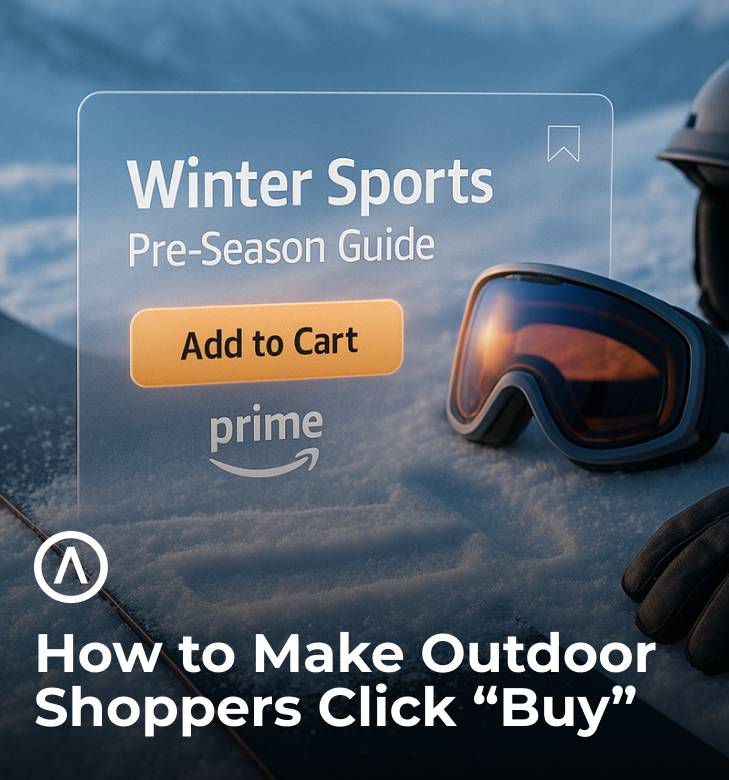
What Outdoor Brands Can Learn From Arc'teryx
Arc'teryx is a Canadian outdoor brand known for its high-quality outdoor apparel. The retailer, founded in 1989, offers a variety of products, including jackets and pants, base layers, gear, footwear, and accessories.
Aside from the impressive lineup of products and strong brand identity, Arc'teryx has recently announced updates that can serve as inspiration for other brands in the outdoor industry. In this blog post, we'll review what Arc'teryx has decided to do and how these moves can impact your relationship with customers, sales, and marketing strategy.
Diversity and Inclusion
Recently, Arc'teryx announced that they will be redesigning their women's clothing. The decision came largely from Chief Creative Officer Katie Becker, who joined the team in 2020. Rather than have one style of apparel, the company will now offer three sizes: fitted, regular, and relaxed; each of the three options will allow skiers and outdoor enthusiasts to choose their preference of style and fit.
This isn't the only change they've made, though. The company has also increased its sizing in bottoms and switched to a numerical sizing guide to allow for more options. But Becker doesn't just credit inclusion efforts to sizing – the company has expanded its snow design team and sponsored athletes to include more women.
What Outdoor Brands Can Learn
Aside from the obvious importance of diversity and inclusion efforts in your product development, there is another lesson to be learned from Arc'teryx. It's hard to have a perspective that includes all demographics if your team doesn't reflect that, and it takes effort to maintain a team that is open-minded and reflective of all walks of life.
When you do have a team that's diverse, however, you'll see how many more ideas get brought to life. Additionally, it ensures everyone has a seat at the table, and that is usually reflected in your marketing efforts. In the case of Arc'teryx, increasing the number of women athletes means your content and coverage become more diverse and inclusive as a result.
Not to mention, industries such as skiing and snowboarding are male-dominated, and it can be frustrating for consumers to see products that don't reflect their needs. If people are trying to shop for outdoor apparel and there are only three traditional sizes – small, medium, and large – you're excluding a massive prospective audience that could have the potential to become part of your community.
Through Becker's intiatives and Arc'teryx's redesign of women's apparel, they're creating products that represent a variety of women, not just a stereotypical hourglass figure or slim shape. Adapting products to serve your customers' needs and address their pain points is a damn good way to generate sales.

Sustainability
In another recent article, Becker discussed Arc'teryx's emphasis on product quality and durability as part of their approach to sustainability. Because the company creates gear for activities like snowboarding, skiing, hiking, climbing, and more, apparel is designed to withstand the tough conditions of each environment and be more long-lasting.
Arc'teryx also offers a ReBird repair program, which has been around for five years and recently increased by 30%. Additionally, they have a ReGear program. Customers can re-sell used apparel to redeem 20% of the original price in store credit, and Arc'teryx refurbishes and sells the items at a lower price. Aside from making some of their high-end products more accessible, these commitments to recycling lead to less overall waste and consumption.
What Outdoor Brands Can Learn
Arc'teryx's efforts highlight the importance of quality over quantity when it comes to building a loyal customer base and creating products that sell. It can definitely be profitable to push out mass quantities of products, but it can be equally rewarding to focus efforts on ways that keep customers interacting with the brand and use high-quality fabrics and materials.
With the ReBird and ReGear opportunities, customers' engagement with Arc'teryx doesn't end once they've made a purchase. It doesn't even end once the gear and apparel have wear and tear. In fact, years down the road, customers have the chance to both recycle their apparel (saving you money on materials) or repair it and continue to use it (rather than throw it away). Not to mention, the ReGear program is genius because store credit incentivizes the customer to continue purchasing and allows people at lower price points than the standard target audience to make purchases as well.
Finally, when you create long-lasting products that respond to the activities and environments people engage with, your customers will notice.
Which one are you more likely to recommend: the shirt you bought that ripped after one wear or the shoes you've had for years and wear everywhere?
Again, each brand in the outdoor industry is different, but as a general rule of thumb, people will notice when your products, gear, and apparel don't take the shortcut.
Wrapping Up
If it hasn't stuck out to you yet, there's a big trend regarding what Arc'teryx is doing and why the brand is so successful. The best marketing starts from the inside out – whether it's a diverse team or a high-quality product. Sustainable marketing doesn't start with talking about how great it is to recycle and help the planet; it's about implementing the actual programs and initiatives wherever possible and illustrating the results that can be achieved. The same can be said for diversity and inclusion efforts.
It's important that customers see (and know about) the best sides of your brand and what you're doing to help them make the outdoor lifestyle a little sweeter. If you feel like your marketing efforts are falling flat or just want to take a peek at how we can help you grow your business, reach out to get your free audit!
Are you ready to grow?
At Algofy Outdoors, we partner with amazing outdoor brands to provide 360° digital marketing solutions.





